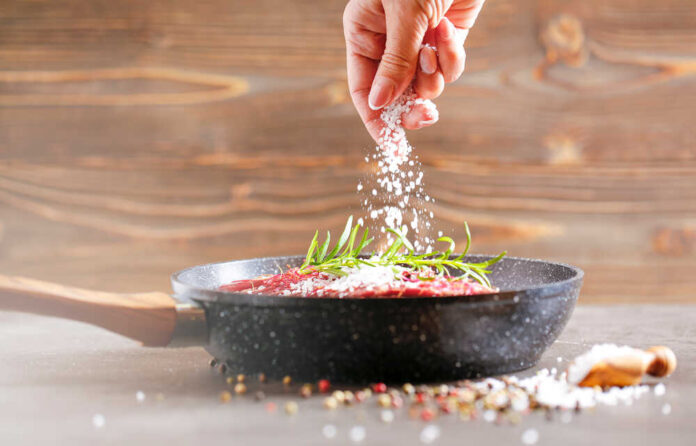
Let us take a moment and reflect on a commonplace yet often overlooked substance in our diet: salt. As we tread the path to superior health, the subtle, yet profound impact of our dietary choices cannot be understated.
Salt, as common and harmless as it may seem, lies at the nexus of these choices and may be silently influencing your health in more ways than you are aware.
The Role of Salt in the Body
Salt, also known as sodium chloride (NaCl), is a compound made up of 40% sodium and 60% chloride. When we refer to ‘salt’ in a dietary context, it is primarily the sodium component we are primarily concerned with.
Salt plays an integral role in maintaining several bodily functions. It helps regulate fluid balance, aids nerve impulse transmission, and plays a part in muscle contractions, including those of the heart.
For these reasons, completely removing salt from our diet is neither feasible nor advisable.
The Silent Overdose: Are We Consuming Too Much Salt?
However, too much of a good thing can be harmful. The World Health Organization recommends an intake of less than 5 grams of salt per day for adults.
This roughly translates to one teaspoon.
Recent health guidelines from the American Heart Association recommend an even lower amount, at less than 3.75 grams per day.
Yet, data suggests that many of us far exceed this amount, primarily due to the hidden salt in processed and restaurant food. This overconsumption can lead to an array of health issues.
The Health Risks: Hypertension and Beyond
High salt intake is most notably associated with hypertension (high blood pressure). Hypertension, a precursor to cardiovascular diseases, can lead to heart attacks and strokes.
But the reach of high salt intake extends beyond cardiovascular health. Research suggests potential links to stomach cancer, osteoporosis, and even cognitive decline.
The Impact on Skin and Weight
From a cosmetic perspective, excessive salt intake can cause bloating and puffiness due to water retention. Salt can also affect your skin health, leading to dryness and accelerating aging.
These are compelling reasons to reconsider our salt habits from not just a health, but also a holistic wellness perspective.
The Hidden Sources of Salt
Salt overconsumption is not solely an individual issue, but a societal one. It’s not just about reaching for the salt shaker too often, but about the hidden salt in processed foods, fast food, and even some restaurant meals.
Our food culture and environments play a huge role in our salt intake, and it requires collective wisdom and action to make impactful changes. As consumers, being informed and making mindful choices is a powerful first step.
Signs and Symptoms of Excessive Salt Intake
While these signs can also indicate other health conditions, they may serve as warning flags pointing towards a high sodium diet:
- Increased Thirst: Excessive salt can disrupt the balance of fluid in your body, leading to frequent feelings of thirst.
- Bloating and Swelling: High salt intake can cause water retention, leading to bloating and swelling, particularly in the hands, feet, and ankles.
- Difficulty Concentrating: Although research is ongoing, some studies suggest a link between high salt intake and cognitive decline.
- Stomach Discomfort: High salt diets have been associated with stomach ulcers and discomfort, potentially due to the detrimental effect on the stomach lining.
- Frequent Urination: Consuming too much salt can lead to increased urination, often disrupting sleep.
- High Blood Pressure: Perhaps the most well-known sign, consistent high blood pressure readings can be a significant indication of excessive salt intake.
Remember, these signs should serve as prompts to investigate further and not be taken as a definitive diagnosis. Consult a healthcare professional if you are concerned about your salt intake.
Reducing Your Salt Intake
Managing your salt intake can significantly improve your health and wellbeing. Here are some tips to help you reduce your salt intake:
- Understand Food Labels: Learn to read food labels properly. Look for the sodium content and opt for products with lower sodium levels.
- Prepare Meals at Home: When you cook your meals, you have complete control over the ingredients. Use this opportunity to limit salt and explore other flavorful herbs and spices.
- Choose Fresh Foods: Fresh fruits, vegetables, and lean meats typically have less sodium than their processed counterparts.
- Limit or Avoid Processed and Fast Foods: These are often high in salt content. Limit your intake of these, and when you do indulge, choose lower-sodium options where possible.
- Dine Out Smartly: When eating out, ask for dishes with less salt or for sauces and dressings to be served on the side.
- Slowly Reduce Salt Usage: Gradually cut down the amount of salt you use in cooking. Over time, your taste buds will adjust.
In the pursuit of healthier dietary habits, patience is key. It’s about making sustainable changes, one step at a time.
Every small step contributes to your larger journey towards holistic health.






















